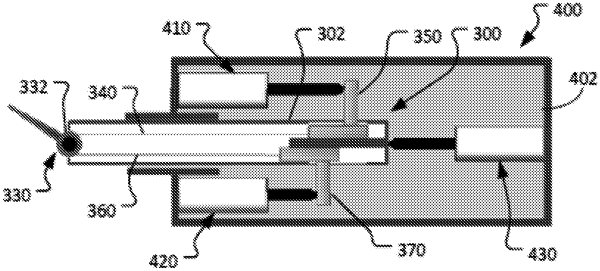| CPC A61B 34/35 (2016.02) [A61B 17/2909 (2013.01); A61B 17/3201 (2013.01); A61B 18/1445 (2013.01); A61B 34/37 (2016.02); A61B 34/71 (2016.02); A61B 90/06 (2016.02); B25J 9/104 (2013.01); B25J 9/1633 (2013.01); B25J 9/1641 (2013.01); B25J 13/085 (2013.01); A61B 17/3421 (2013.01); A61B 2018/00595 (2013.01); A61B 2034/301 (2016.02); A61B 2090/064 (2016.02); A61B 2090/066 (2016.02)] | 21 Claims |

|
1. A computer-assisted device comprising:
a drive unit comprising a first actuator and a second actuator;
a first engagement member drivably coupled to the first actuator;
a second engagement member drivably coupled to the second actuator; and
a control unit coupled to the drive unit;
wherein the control unit is configured to, in an engagement mode:
actuate the first actuator to drive the first engagement member;
detect engagement of the first engagement member with a third engagement member of an instrument, where a movement of the third engagement member causes a movement of an end effector of the instrument in a first direction of a degree of freedom;
actuate the second actuator to drive the second engagement member;
detect engagement of the second engagement member with a fourth engagement member of the instrument, where a movement of the fourth engagement member causes a movement of the end effector in a second direction of the degree of freedom, the second direction being opposite the first direction;
in response to detecting engagement of the first engagement member with the third engagement member and detecting engagement of the second engagement member with the fourth engagement member, actuate the first and second actuators such that a force or torque experienced by the first engagement member reaches a preset level; and
actuate the first and second actuators to cause movement of the end effector along the degree of freedom while maintaining the force or torque experienced by the first engagement member at or below the preset level.
|